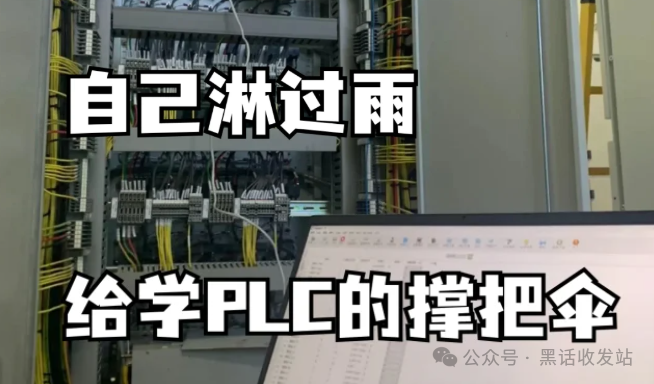
PLC Intelligent Control: Reinforcement Learning Controllers Enhance Complex System Optimization by 60%!
Introduction
Hello everyone! Today I want to share with you a technological breakthrough that excites the industrial automation field — the PLC Reinforcement Learning Controller! Don’t be intimidated by this technical term, I will explain it in the most relatable way. Trust me, mastering this technology will allow your PLC to not only automatically optimize control parameters like a “seasoned driver” but also improve the control efficiency of complex systems by over 60%! **Want to know how this is achieved?** Let’s explore together!
What is a PLC Reinforcement Learning Controller?
Let’s start with a vivid analogy. Imagine you are a novice driver; traditional PID control is like the fixed rules you learn in driving school: “stop at a red light, turn the steering wheel when turning.” The reinforcement learning controller, on the other hand, is like a seasoned driver with a million kilometers of driving experience, capable of real-time adjusting driving strategies based on road conditions, knowing when to gently apply the brakes and when to slow down in advance.
In PLC control, reinforcement learning allows the controller to find the optimal control strategy through continuous trial and error and learning. It no longer relies on fixed control algorithms but can autonomously adapt to complex and variable production environments!
Why Do We Need Reinforcement Learning Controllers?
You might ask: “My PID control works just fine, why switch?” Let me illustrate with a few real scenarios:
-
Handling Nonlinear Systems: For example, temperature control in injection molding machines, where traditional PID performs unstably with changes in mold temperature. The reinforcement learning controller can automatically adjust parameters like an experienced craftsman.
-
Managing Multivariable Coupling: In chemical production, the parameters of multiple reactors influence each other. Reinforcement learning can comprehensively analyze all variables to find the optimal balance point.
-
Adapting to Environmental Changes: When equipment ages or raw material characteristics change, traditional control requires manual retuning. The reinforcement learning controller can automatically adapt to these changes to maintain optimal performance.
Implementation Methods for Reinforcement Learning Controllers
Here are a few practical implementation methods:
1. Q-Learning Algorithm
This is the easiest reinforcement learning method to get started. The PLC establishes a “state-action” value table (Q-table) to record the expected returns of taking different control actions in different states. It’s like accumulating experience points in a game, ultimately learning the optimal control strategy.
2. Deep Reinforcement Learning
For more complex systems, neural networks can be deployed on high-end PLCs (like Siemens S7-1500). This method can handle high-dimensional state spaces, making it particularly suitable for vision-guided automation systems.
3. Hybrid Control Architecture
The most practical solution is to combine reinforcement learning with traditional PID. Reinforcement learning is responsible for macro strategy optimization, while PID executes micro precision control, complementing each other’s strengths.
Real Application Case
Let’s look at a real success case:
A car welding production line has over 200 welding points, with a good product rate of only 92% under traditional control. After introducing the reinforcement learning controller, the system can:
-
Real-time monitor the current, pressure, and temperature of each welding point
-
Automatically adjust welding parameters to compensate for equipment deviations
-
Predictive maintenance to identify impending failures of welding guns
Results: The good product rate increased to 98.5%, energy consumption decreased by 25%, and equipment maintenance costs dropped by 40%!
Implementation Challenges and Solutions
Of course, new technologies also have challenges to overcome:
-
Training Data Requirements: The solution is to start training from digital twins and then transfer to the actual production line.
-
Real-time Requirements: Choose dedicated AI modules (like Siemens TM NPU) to accelerate inference.
-
Safety Verification: Establish safety boundaries to ensure that the learning process does not lead to dangerous operations.
How to Start Your Reinforcement Learning Journey?
**Step-by-step is key:
-
Assess Applicability: Start with control loops that are volatile and difficult to model.
-
Select Development Platform: Recommended is the combination of Codesys + Python, which has a lower barrier to entry.
-
Small-scale Validation: Pilot in a critical workstation, validate the effect before expanding.
-
Continuous Optimization: Establish a feedback loop to allow the system to continuously learn and improve.
Interactive Discussion
-
Which part of your factory is most suitable for trying reinforcement learning control?
-
Do you think reinforcement learning will completely replace traditional PID control?
-
During implementation, what is your biggest concern?
Conclusion
The PLC Reinforcement Learning Controller is not a future technology, but rather a productivity tool that has already been implemented! A 60% improvement in system optimization not only means higher product quality, but also represents a smarter, more adaptive production method.
In the era of Industry 4.0, let’s empower PLCs with human-like decision-making intelligence through reinforcement learning! If you are interested in this technology or have already tried it, feel free to share your insights in the comments!
ShareSaveViewLike